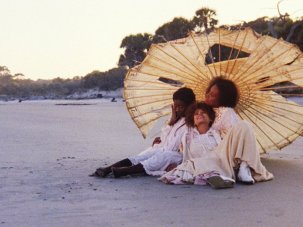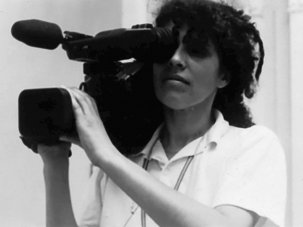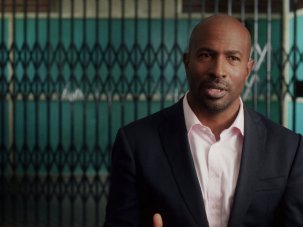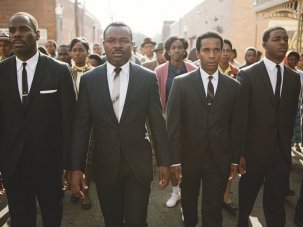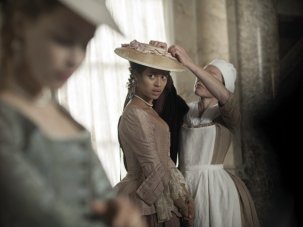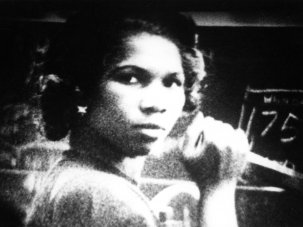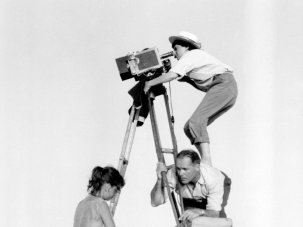An unbroken line can be traced back from Beyoncé’s landmark visual album of 2016, Lemonade, through to Julie Dash’s breakthrough 1991 feature Daughters of the Dust and beyond – a legacy of images created by and about black women. Taking inspiration from writers such as Maya Angelou and Alice Walker, with roots in activism and theatre, and springing out of film movements such as the LA Rebellion in the US and the Sankofa Film Collective in the UK, these black women filmmakers created highly distinctive works, deploying poetic visuals, experimental techniques and a dedication to reflecting the black feminine in all its variety. Historically these stories and the women who authored them have been obscured from view, making their work ripe for rediscovery.

The Sight & Sound Deep Focus season Unbound: Visions of the Black Feminine runs through June 2017 at BFI Southbank, London.
The list is by no means comprehensive, of course, and certainly doesn’t seek to reduce the contribution of black women filmmakers to a single category. A great many other black women across the globe have had an impact on cinema in other ways: figures such as Afro-Cuban director Sara Gómez, Gone Too Far! director Destiny Ekaragha in the UK, Senegalese director Safi Faye and Selma director Ava DuVernay, to name just a few. But all the filmmakers below have made
The Sight & Sound Deep Focus programme Unbound: Visions of the Black Feminine plays at BFI Southbank, London throughout June, and work by the filmmakers highlighted below is included for the vital interventions they have made throughout cinema history to reflect the lives and experiences of black women.
1. Maya Angelou

Diana Sands in Georgia, Georgia (1972)
Maya Angelou’s writing perfectly captured the experiences of black American women and has proved an abiding influence for black female writers and filmmakers alike. Her far-reaching career included work in film as a writer, director and occasional actor. Initially appearing on screen as a dancer in Porgy and Bess (1959), she later took roles in Roots (1977) and Poetic Justice (1993), for which she also wrote the poetry recited by the film’s co-star Janet Jackson.
Angelou may not ultimately have had the opportunity to direct the provocative tale of interracial attraction Georgia, Georgia (1972) – though she did write the screenplay and music – but the film still bears her unmistakeable ability to probe the racial pathologies of American society and to expose the burden these placed on black women. In a fearless performance, Diana Sands plays Georgia, a sensual black American songstress who falls for a white photographer (Dirk Benedict) while touring Sweden. Through the intense disapproval of Georgia’s assistant/‘hired mother’, Angelou uncovers America’s deep-seated racial wounds.
With the recent revival of conversations about black womanhood, it feels as though black women in the media have moved from the margins to the centre of the stage – from the heroically outspoken students who resisted racist rules about how they could wear their hair at Pretoria Girls High in South Africa, to the celebratory hashtag #BlackGirlMagic, to Nigerian novelist Chimamanda Ngozi Adichie’s essay declaration We Should All Be Feminists.
Angelou herself would go on to direct twice, once for the 1976 TV series Visions, and again in 1998 with the feature Down in the Delta.
2. Kathleen Collins

Losing Ground (1982)
A playwright, prose writer, academic and director, Kathleen Collins was a crucial figure in the history of filmmaking by black women – now finally receiving the recognition she deserves, nearly 30 years after her death in 1988 at the age of 46. With just two released works – The Cruz Brothers and Miss Malloy (1980) and the remarkable Losing Ground (1982) – Collins shaped her films around the textures and tones of her distinct characters.
Losing Ground explores how the equilibrium between philosophy professor Sara and her impulsive artist husband Victor hangs in the balance when Sara embarks on quest of self-discovery. The film sidesteps any attempt at reflecting a generalised ‘black experience’ in exchange for something more subjective, building out of the unapologetic philosophical vigour of her leading woman and cast. What remains of an onscreen black experience is distilled refreshingly through irreverent humour and playful techniques such as the film-within-in-a-film that simultaneously examines identity formation and deconstructs it.
Viewed in retrospect, the film seems years ahead of its time and perhaps ought to have received the distinction given, nine years later, to Julie Dash’s Daughters of the Dust as the first commercially distributed feature by a black woman in the US. Collins’s work is only now becoming available – as well as the films, Granta has recently published a selection of her short stories.
The trailer for Ja’Tovia Gary’s An Ecstatic Experience
Significantly, Collins’s legacy also endures through the responses of present-day black female filmmakers to her work, such as Ja’Tovia Gary, whose short film An Ecstatic Experience (2015) was inspired by Sara’s quest in Losing Ground.
3. Women of the LA Rebellion
In the shadow of the Watts uprisings in 1965, the civil rights movement and anti-Vietnam sentiment, a number of young black filmmakers studying at UCLA emerged in the late 60s and early 70s, creating a highly distinctive body of work with streaks of neorealism, experimental practice and a distinctive aesthetic reflecting the African diaspora in the US. The cohort has become known as the LA Rebellion.
Among the key short works produced by women were Dash’s Four Women (1975) – set to Nina Simone’s ballad of the same name – in which the illusion of black female stereotypes are shattered using interpretive dance; and Diary of an African Nun (1977), which Dash adapted from an Alice Walker story, depicting a black nun living in Africa, shrouded in white and musing on the injustices of the West’s colonial mission and the emptiness she feels as a result of her supposed union with Christ. Diary was an early venture for Dash into narrative filmmaking – her experiments layering internal monologue over highly composed backdrops would form the blueprint for the sensuous tableaux in her debut feature Daughters of the Dust, which stitched together the subjectivities of three generations of women.
Illusions (1982), again by Dash, explored the role Hollywood played in creating fantasies about race through the parallel stories of a female executive passing for white in a major film studio and that of a darker-complexioned dubbing artist.

Water Ritual #1: An Urban Rite of Purification (1979)
Barbara McCullough’s Water Ritual #1: An Urban Rite of Purification (1979) offered a striking blend of black feminist and experimental aesthetics as it depicted a ceremony to cleanse the body and the environment in a blighted urban landscape.
Alile Sharon Larkin’s A Different Image (1982) is a delicate portrait of a beautiful young artist’s attempt at platonic male companionship, which exposes the difficulty black women face in being acknowledged outside of sexual and racialised beauty standards and stereotypes.
Another standout work is Zeinabu irene Davis’s Cycles (1989), a psycho-spiritual journey about a young woman awaiting with great anticipation the completion of her menstrual cycle. Davis puts forward a striking visual language of the black American diaspora, drawing on images of Yoruba Orishas, Caribbean folklore and stop-motion animation.
4. Camille Billops
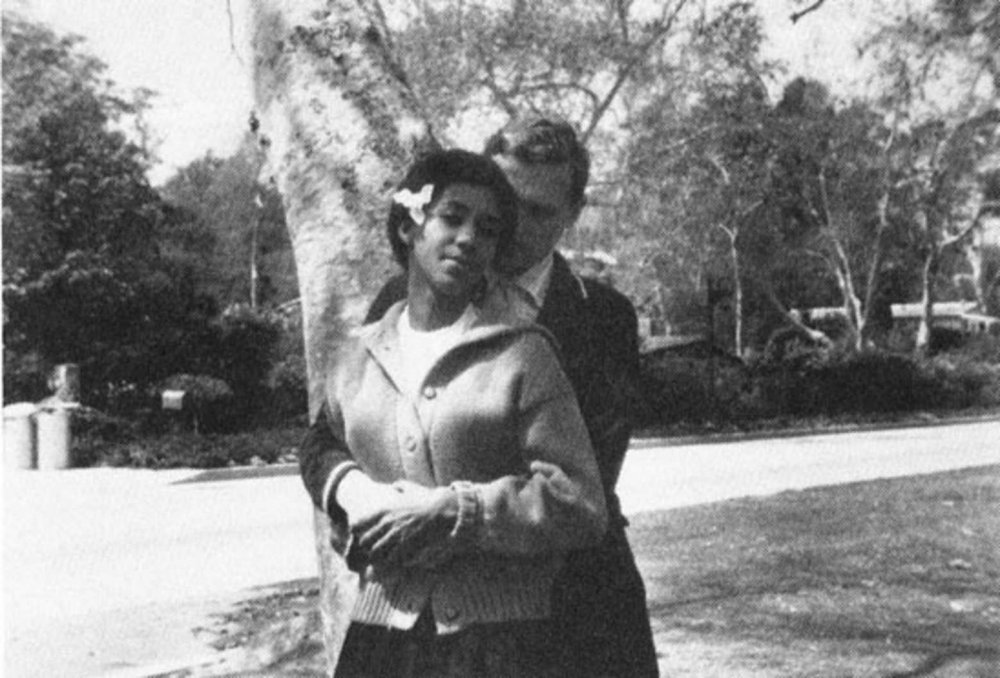
Finding Christa (1991)
Eccentric American artist Billops was born in Los Angeles in 1933, and began her career as an artist and sculptor. She moved into filmmaking in the early 1980s, creating works that were collaborations with, and about, the women in her family.
Her first film was the incisive short documentary Suzanne, Suzanne (1982), about her niece, who, after years of drug addiction, is compelled to confront the legacy of her abusive father and the passive complicity of her mother who also suffered at his hands.
Billops’s other significant films include the bawdy short Older Women and Love (1987), based on her aunt’s relationship with a younger man, and the stirring Finding Christa (1991) – co-directed with James Hatch – which took the Grand Jury Prize for Documentaries at Sundance. In Finding Christa, Billops touches on the conflict between artistic and maternal instincts as she recounts her search for the daughter she gave up for adoption. The film mingles candid interviews, archival footage and Billops’s own bold exhibitionism as an artist with experiments in scripted reality scenarios and musical performance. The cumulative effect is a profound feminist argument about the difficulty women have in maintaining control over their lives in the face of social pressure solely to be nurturers.
5. Euzhan Palcy

Sugar Cane Alley (1983)
Born and raised in Martinique, Palcy received unanimous critical acclaim and the Silver Lion at the Venice Film Festival for her debut feature Sugar Cane Alley (1983), an exploration of life in Martinique under French colonial rule filtered through the coming-of-age tale of its bright young protagonist José. He must reconcile the opportunities granted to him by an elite education with his shanty town background and the worldly values instilled in him by his elderly friend Medouze, a former slave, and M’Man Tine, his tenacious, pipe-smoking grandmother.
Encouraged to make the film by François Truffaut while studying in Paris, Palcy shot on location in Martinique for less than $1 million. With Sugar Cane Alley and the fairytale-musical Simeon (1992), Palcy put the French West Indies on cinema’s global stage, and also became the first black woman to direct a major Hollywood feature, A Dry White Season (1989), which brought Marlon Brando back to the screen after a nine-year absence.
6. The Sankofa Collective
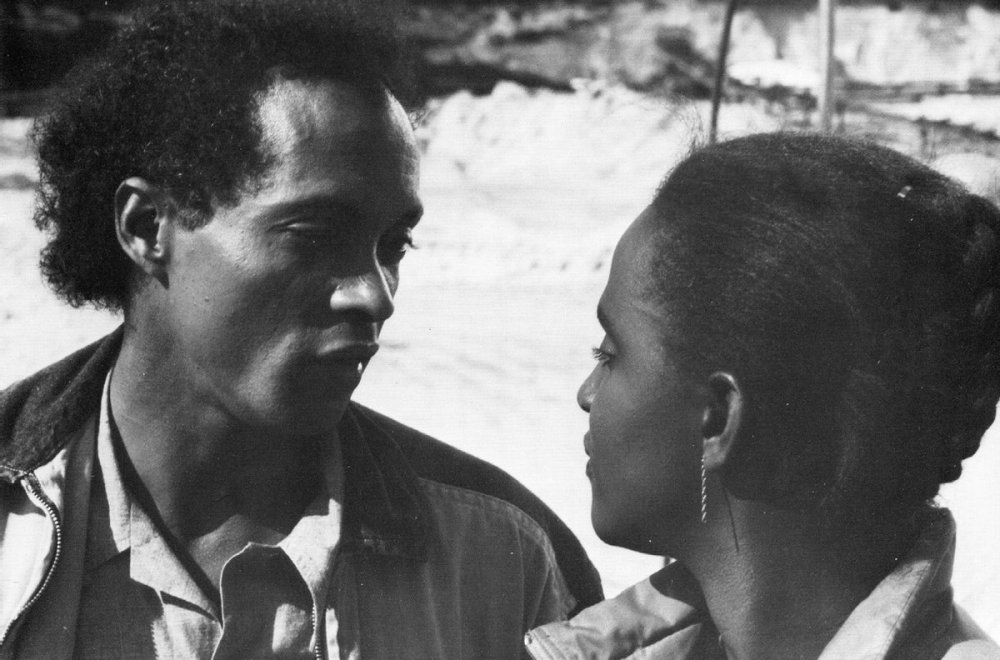
The Passion of Remembrance (1986)
Sankofa Film and Video was set up in the UK in the summer of 1983 by five artist-filmmakers: Martina Attille, Maureen Blackwood, Robert Crusz, Isaac Julien and Nadine Marsh-Edwards. With funding from the Greater London Council and the newly launched Channel 4, Sankofa and other groups – including Retake Film and Video Collective, Black Audio Film Collective and Ceddo Film and Video Workshop – adopted a collaborative approach to filmmaking with the intention of developing an independent black film culture.
Much of Sankofa’s work was a response to the fraught racial climate in Britain at the time, and it was also significantly influenced by contemporary post-colonial and cultural studies. In The Passion of Remembrance (1986), Blackwood and Julien created a visual mosaic to signify the complexity of the black British experience and the often overlooked intersections between race, class, gender and sexuality – particularly in political struggles for liberation. The film shifts between real and mystic landscapes, exploring the totality and multiplicity within the black experience, guided by the verbal tussle between speakers Anni Domingo and Joseph Charles.
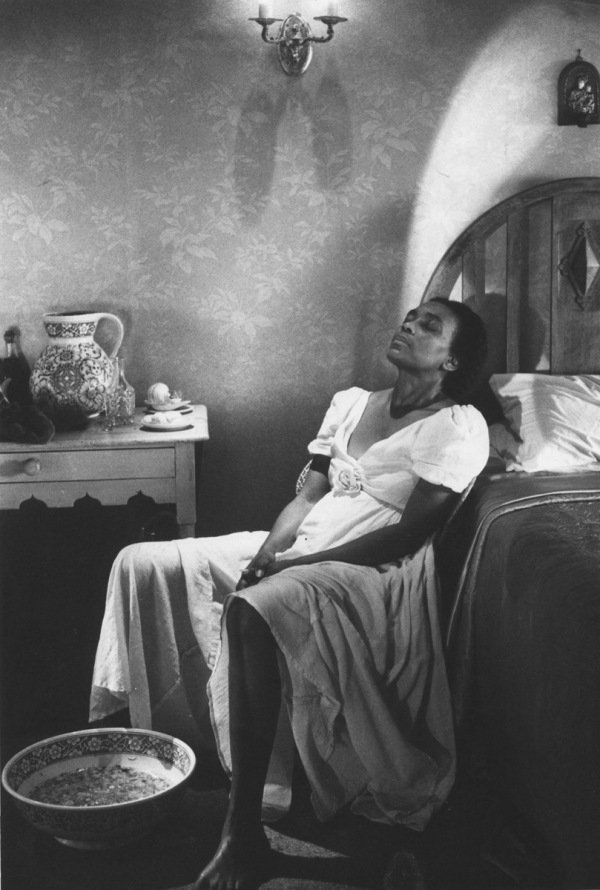
Dreaming Rivers (1988)
In 1988 Attille grappled with another uncharted area of black Britain with Dreaming Rivers, a 30-minute film exploring migration narratives. Constructed from the perspective of a Caribbean woman on her deathbed, as her three children await her passing, the film explores the trauma of relocation with insightful reflections made through the children about the loss of Caribbean identity that fragments with every passing generation.
What is most interesting is the way Attille’s visual style so deftly manages to evoke the female interiority at the heart of her work, something also seen in Julie Dash’s films. As Dash did in Daughters, Attille adopts a nostalgic aesthetic, layering the regional Creole dialect with highly formal acting styles and framing, giving an artistic visual form to the experience of the black British diaspora.
7. Ngozi Onwurah
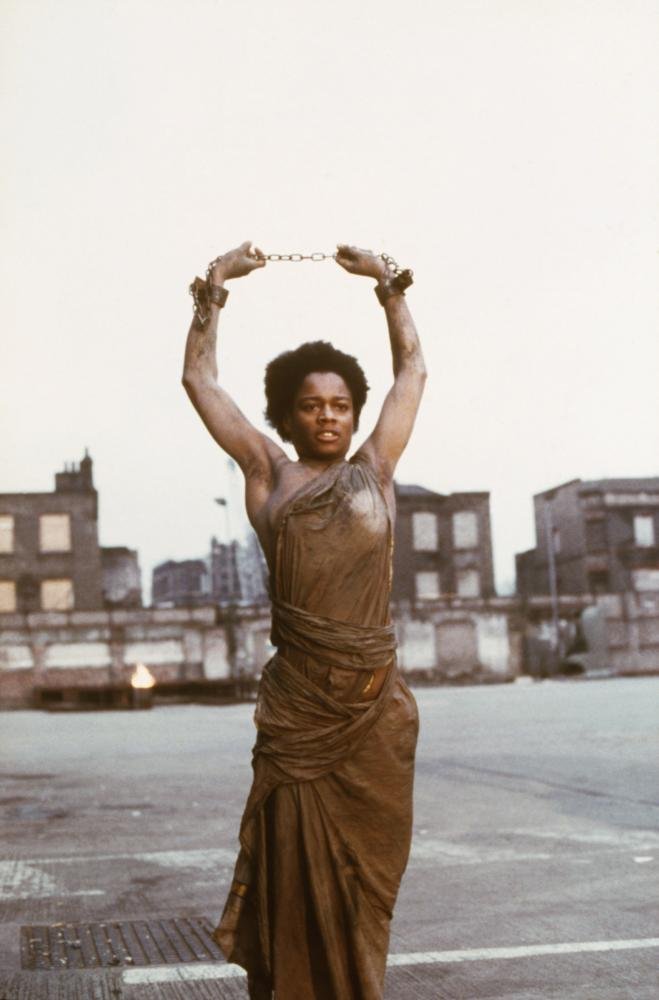
Welcome II the Terrordome (1995)
Throughout the 1980s and 90s British director Ngozi Onwurah made a number of short-form works that exposed the social wounds created by narrow beauty standards and the complexity of racial identity – films such as Coffee Coloured Children (1988), The Body Beautiful (1990), and And Still I Rise (1993), inspired by Maya Angelou’s poetry. White Men Are Cracking Up (1996), written by Bonnie Greer, explodes with great intelligence the notion of the black feminine mystique via the murder mystery – the story of Maisie Blue, a supposed black widow, under investigation for her involvement in the deaths of successful white men.
Onwurah became the first black British woman to release a commercially distributed feature with 1995’s Welcome II the Terrordome, a nightmarish Afrofuturist tale that took its title from a track on Public Enemy’s album Fear of a Black Planet. Terrordome traces the legacy of slavery through to present-day racial tensions and police brutality when a sprawling black ghetto known as the Terrordome plunges into chaos following the actions of a grieving mother. Onwurah’s uncompromising debut adopted a diverse visual style, with influences from mythological slave narratives, exploitation cinema and traditional Greek tragedy – with the plot guided by hip-hop chorus emcee Black Radical Mk II.
8. Leslie Harris
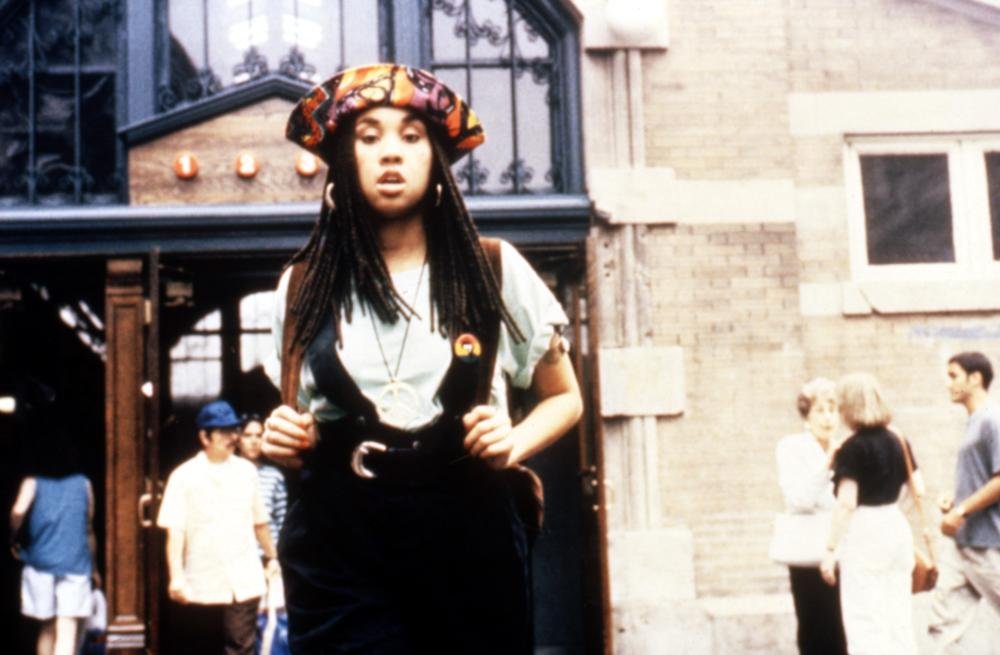
Just Another Girl on the IRT (1992)
Harris’s 1992 debut feature Just Another Girl on the I.R.T. arrived amid a wave of new black independent filmmaking in the US, with films such as Straight out of Brooklyn (1991) and Menace II Society (1993), and was described at the time as a cross between Godard and a hip-hop music video, with the film’s soundtrack dominated by women emcees of the era. Shot in 17 days for less than $500,000, Harris’s tale delves beneath the ‘sassy urban’ archetype with a dynamic and insightful story about a precocious Brooklyn teen, Chantel (Ariyan Johnson), headed for medical school and determined to be more than “a girl from around the way”, as she tells us in one of her numerous direct-to-camera asides.
Harris highlighted the lack of realistic images of women like herself on screen when describing the motive behind the film, saying, “There had been films made from an African American male perspective about African American coming of age, [but] the women in those films are just hanging off some guy’s arm. I wanted to make a film from the perspective of a 17-year-old girl at the crossroads. I’d see these teenage women on the subway and I’d want to follow them home and show them as they are – with all their energy and all their faults and flaws.”
9. Kasi Lemmons

Eve's Bayou (1997)
Lemmons began her career as an actor, appearing in films such as School Daze (1988), Silence of the Lambs (1991) and Candyman (1992), before moving into directing with the short Dr. Hugo (1996), the protagonist of which became the blueprint for the patriarch in her first feature Eve’s Bayou (1997). This film was a revelation – a highly assured melodrama as well as a deliciously rich and atmospheric Southern gothic tale.
Told through the eyes of a woman named Eve reflecting on her childhood in the Louisiana wetlands, it’s a story thick with secrets and scandals. Eve recalls the way her wealthy family’s world unravelled when she caught her father Louis (Samuel L. Jackson) with another woman. With an outstanding female cast, Lemmons unlocks the mysticism connected to the female experience with a rare glimpse of America’s black upper-middle class.
The film has had an under-the-radar influence – its atmosphere can be felt in films such as Boneshaker (2013), by Frances Bodomo, a filmmaker with her own unique flare for mesmerising storytelling. Boneshaker weaves a tale of cultures blending, as experienced by the young Blessing (Quvenzhané Wallis), whose immigrant parents visit an African Pentecostal healer in the Louisiana Bayous.
10. Black American queer and lesbian cinema
A native of Washington D.C., Michelle Parkerson spent her formative years as a spoken-word artist in the 1970s – a time of great artistic and political ferment within the city’s lesbian, gay, bisexual, trans and queer community. Parkerson was one of the first black filmmakers to reflect the lesbian and queer identities of black women, with much of her work touching on their impact as performers and social activists.
Stormé: Lady of the Jewel Box (1986) profiles LGBTQ civil rights icon and entertainer Stormé DeLarverie – singer, bouncer and drag king at America’s first racially integrated revue, whose alleged scuffle with police became one of the defining calls to action during the Stonewall uprisings. The prominence given to DeLarverie through archive material and in situ interviews, in which she asserts her butch lesbian identity, helps to underscore on screen the full spectrum of black womanhood.
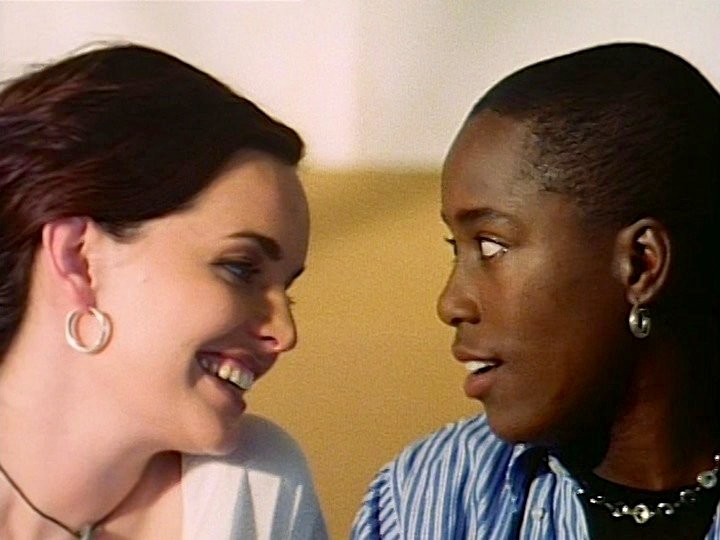
The Watermelon Woman (1996)
Cheryl Dunye followed Parkerson’s work with her feature debut The Watermelon Woman (1996), the first US narrative feature about the black lesbian experience. The brilliantly reflexive film examined the omission of black women from film history, with Dunye leading the cast as a semi-fictional version of herself in the role of a lesbian filmmaker and video store clerk who becomes interested in Hollywood films from the 30s and 40s that featured uncredited black female actors. Dunye described her early works, including Watermelon Woman, as ‘dunyementaries’ because of her integration of fiction and documentary forms.

Pariah (2011)
A black lesbian filmmaker who has received more recent acclaim is Dee Rees, whose powerful Pariah (2011) was a semi-autobiographical story about Alike, a promising Brooklyn teen, quietly but firmly embracing her lesbian identity despite the strain it causes within her family. With other significant releases such as Bessie (2015), about blues star Bessie Smith, Rees has crafted an arresting visual style that elevates images of queer black love and desire. Rees’s latest film Mudbound played to great critical acclaim at this year’s Sundance Film Festival.
11. Contemporary black British female directors
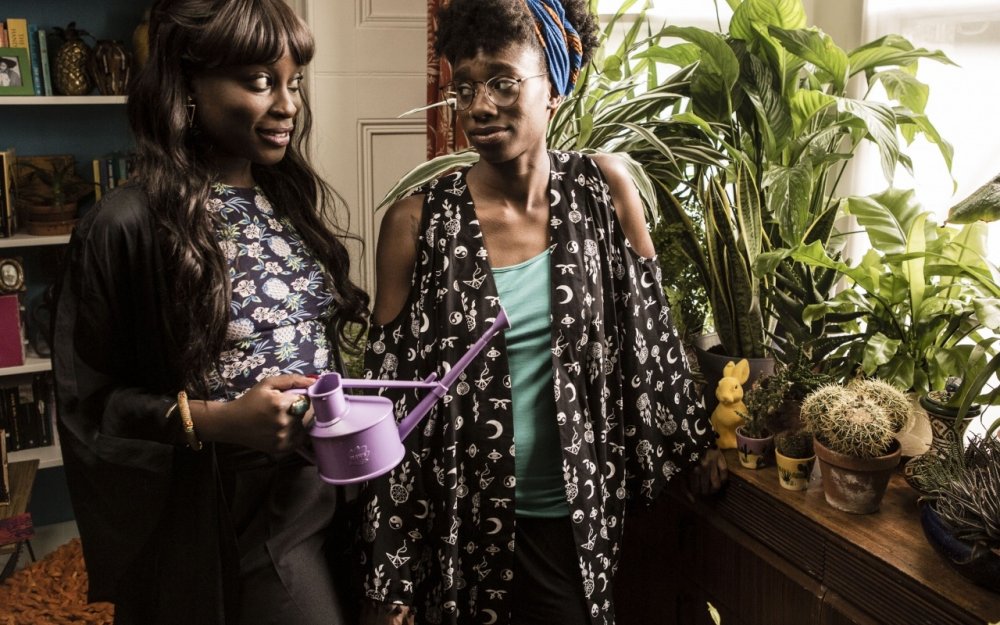
Vanessa Bibirye and Michelle O Tiwo in Ackee and Saltfish
With the recent controversy about the lack of leading roles for black women in John Ridley’s six-part Showtime historical drama about the British Black Power movement Guerrilla, it’s no surprise that identity and representation remain a key aspect in films by black British women. In various ways their work responds to the unique dichotomy within representations of black women between relative invisibility and the hyper-visibility of one-dimensional depictions.
In contrast to their predecessors from the 1980s film collectives, whose output engaged more overtly with academic theory and archival content, the black feminist discourse of this new generation’s films can be distinguished, in varying degrees, by a millennial sensibility that is stylish, globally conscious, irreligious, highly subjective and – perhaps most significantly – uses social media and digital technology for its production and exhibition.
Cecile Emeke’s Ackee & Saltfish embodies this approach. Conceived as a short film in 2014 and then developed into a web series, Ackee & Saltfish focuses on the meandering conversations between best friends Rachel and Olivia as they wander the streets of East London in search of a Caribbean takeaway. The provocation in Emeke’s work lies in allowing young black women to defy clear-cut narratives by simply giving them space on screen to hang out.
That said, the film’s loose narrative structure and simple aesthetic maintains a strong political undercurrent, with incidental shots of the women leafing through works by Alice Walker and Audre Lorde, and with the difficulty the characters have in locating Caribbean food symptomatic of gentrification’s erosion of black urban space. Emeke’s use of social media to show her work allowed her to access and address the needs of an underserved audience directly, and at the same time circumvent traditional funding sources that have historically stifled the careers of black female filmmakers.
Other directors to establish themselves through non-traditional film formats are Grace LaDoja and Jenn Nkiru. With a style that blends aesthetics from high-concept fashion with grime/hip-hop culture, Ladoja works within music video and branded content and has directed a quartet of music videos for the tracks on avant-pop artist FKA Twigs’s EP1. These reflect their shared preoccupation with current feminist debates about the female body and sexuality in popular culture.
Nkiru’s sharply defined style showcases the millennial inclination to incorporate various thematic and aesthetic influences, with her energetic snapshot of New York City’s black and Latino voguing culture playing more as a fashion film than documentary.
En Vogue by Jenn Nkiru
Recent works from Zawe Ashton and Phoebe Boswell use the subjectivity of black women as a core narrative device. Ashton’s Happy Toys plays with the notion of invisibility/hyper-visibility, with the barrier between an emotionally fragile mother and her young daughter heightened by the adult-sized teddy bear costume the former has to wear in her job as a mascot at a children’s toy shop.
Happy Toys extract
Artist-filmmaker Boswell turns the camera on herself in the eerie Prologue: The Lizard of Unmarriedness (2015), which blends drawing and soundscape techniques to examine the potency of belief structures from the vantage point of an unmarried woman encountering East African spiritual beliefs.
The British theatre maker debbie tucker green is older, and therefore an outlier among the millennial cohort listed above. Her film Second Coming (2014), playing both as supernatural urban parable and meditation on motherhood, is noteworthy for the interiority of its narrative, which follows a middle-class mother tormented by an unplanned pregnancy, played in a highly nuanced performance by Nadine Marshalls.
-
Women on Film – all our coverage

A window on our ongoing coverage of women’s cinema, from movies by or about women to reports and comment on the underrepresentation of women...
-
Sight & Sound: the June 2017 issue
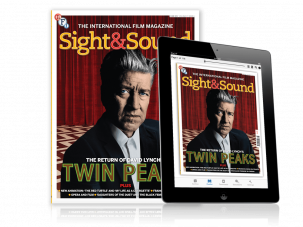
The return of Twin Peaks, The Red Turtle, My Life as a Courgette, François Ozon’s Frantz, Buñuel at the opera, Daughters of the Dust and the black...
-
The Digital Edition and Archive quick link
Log in here to your digital edition and archive subscription, take a look at the packages on offer and buy a subscription.





